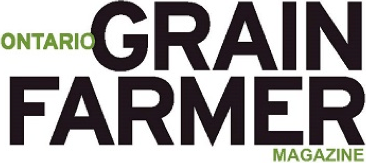Metagenomics of Fusarium Head Blight of wheat
Principal Investigator: David Guttman and Gopal Subramaniam
Research Institution: University of Toronto / Agriculture and Agri-Food Canada
Timeline: April 2017 – March 2022
Objectives:
- Catalogue and monitor behaviour of natural microbial endophytes and epiphytes on wheat heads by:
- Assessing natural variation of microbial populations in resistant versus susceptible wheat varieties.
- Determining dynamics of microbial populations and their behaviours after Fusarium graminearum infection.
- Identifying potentially beneficial microbes that may influence the course of the F. graminearum infection process.
Impacts:
- The identification of potential yield-promoting members of the wheat head microbiome when the wheat head is infected with Fusarium Head Blight (FHB) will help guide our future research focused on identifying and developing novel biocontrol agents to protect wheat against FHB.
- The improved knowledge of the host/pathogen interaction in the context of natural microbiome found on the wheat head will greatly improve our ability to combine natural resistance strategies or interfere with disease development using sustainable crop management protocols (e.g., biological control).
Scientific Summary:
FHB is a devastating global disease of small grain cereals that has been called “the worst plant disease to hit the US since the rust epidemics in the 1950s.” The disease is caused by the fungus Fusarium graminearum, which overwinters in crop debris and infects grain heads under favourable environmental conditions. FHB poses a double threat. First, it can significantly reduce both yield and seed germination by discoloring and shriveling the grain kernels. Second, the pathogen produces mycotoxins that contaminate grains during infection, and which are a very direct health risk to humans and domesticated animals. The severity of FHB infection depends on the cereal variety, amount of fungal inoculum and favourable weather conditions. The most effective control strategies have relied on the use of resistant varieties and fungicides; however, these control measures are not always effective, resulting in massive crop losses or contaminated grain. Consequently, there is very strong interest in the identification and development of novel biocontrol agents that can assist in the fight against this disease.
Our goals were to characterize the microbial communities found in and on wheat heads via sequencing. We assessed how the microbial communities (microbiomes) differ among cultivars with different levels to susceptibility and determine how they respond to Fusarium graminearum infections and the development of FHB. We assessed the impact of both host and pathogen genetic variability on disease development. Understanding the wheat head microbiome and the dynamics of this community during FHB disease development has the potential to reveal new pathogen antagonists or growth promoting microbes, and thereby facilitate the identification of novel biocontrol agents.
We developed a robust protocol to assess wheat head microbiomes and surveyed the diversity of these microbial communities among multiple wheat varieties and during different stages of FHB infection. We performed microbiome analysis on 159 samples taken from four wheat cultivars during two periods of the growing season. Our analysis found a number of microbial species that are differently abundant among resistant and susceptible wheat cultivars that would be interesting candidates for further study to assess if they play a beneficial role during infection. The protocol we developed is highly reproducible and easy to use. It works well with plants, fungi, reptiles, insects, and bacteria.
We identified numerous bacterial endophytes (i.e., Pantoea agglomerans, Exiguobacterium acetylicum and Pseudomonas rhizosphaerae) and a number of species that show differential abundance between the resistant and susceptible cultivars (Pseudoxanthomonas mexicana and Modicisalibacter tunisiensis) that could be potentially used in plant growth-promoting/biotic/abiotic control strategies. Some of the species have been previously reported to be beneficial for plant growth or increasing plant resistance to pathogens. This work will allow grain farmers to determine if wheat genetic diversity influences the associated microbiome composition and if the wheat-associated microbiome impacts FHB infection. Specifically, will a certain combination of microbes in the microbiome deter FHB or other diseases?
Our analyses show significant differences in the microbial community composition from resistant cultivars compared to the susceptible cultivars. This suggests that the variety of wheat has an impact on the microbiome. The communities from both cultivars are comprised of both putatively beneficial and pathogenic bacteria.
External Funding Partners:
Agriculture and Agri-Food Canada
Compute Canada Resource Allocation Competition (RAC)
Project Related Publications:
None.

